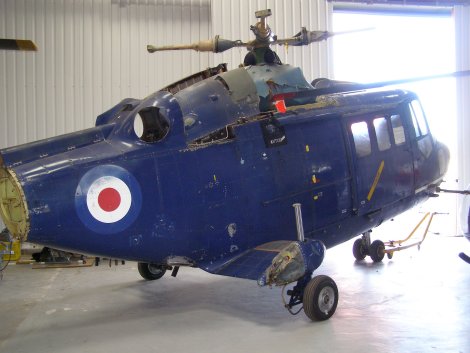 |
In January 2011 volunteers from the
Lynx Operations Support Team at RNAS Yeovilton undertook to restore
The Helicopter Museum's, Oxford blue, Lynx HAS.2, XX910, for exhibition
at the annual Yeovilton International Air Day on 9th July 2011.
This would commemorate the 40th anniversary of the first flight
of a Lynx, XW835, piloted by Ron Gellatly, in 1971.
XX910 was transported to Yeovilton, on a low-loader, on 16th
February 2011 with an intention to return it to The Museum, for
permanent display, later in 2011. XX910 first flew on 23rd April
1974 as one of the pre-production prototypes of the light Lynx
HAS.2, ASW helicopter, intended to replace the Westland Wasp.
|
Piloted by John Morton in September 1974, Lynx
HAS.2, XX910, flew with the Westland display team at the Farnborough
Air Show (page
bottom). In June 1975, it was shown at Le Bourget.
During practice for its second Farnborough Air Show, in September
1976, it became the first Lynx to perform a loop and, in November
1976, it flew HRH The Prince of Wales out to HMS Sheffield in
the Solent. |
| |
 |
|
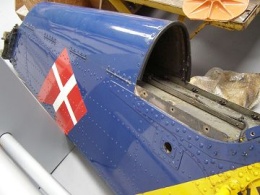 |
|
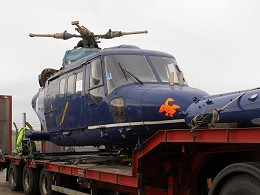 |
|
|
|
|
|
| As a Museum exhibit XX910 lacked a tail assembly, but a
discarded tail boom and pylon, from Danish Navy Lynx Mk.80, S-142,
and by then belonging to The Museum,
were also sent to Yeovilton and used as replacements. |
|
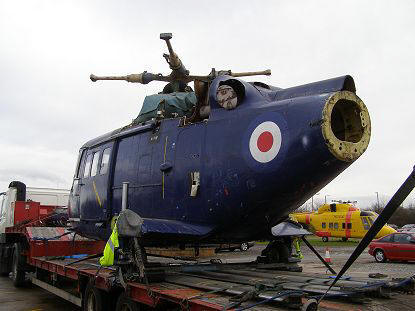 |
|
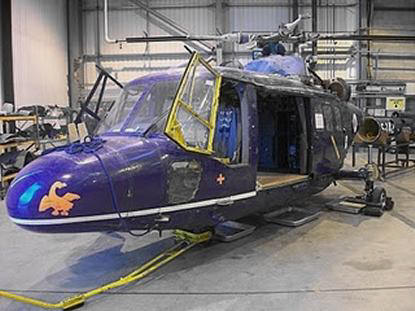 |
|
|
|
| XX910 left The Museum
(above left) after lunch on
16th February 2011 and was safely in 6 Hangar, RNAS Yeovilton (above
right), a
couple of hours later. |
| |
|
|
| Chris Adams' photographs
of The Museum's Westland Lynx HAS.2, XX910, at RNAS Yeovilton on 3rd
March 2011 |
|
|
|
|
|
 |
|
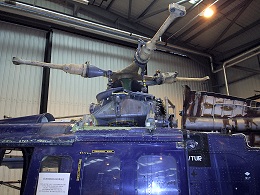 |
|
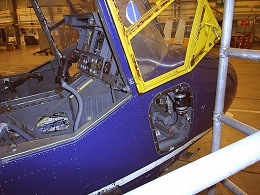 |
|
| XX910 in 6 Hangar with
4-man RNAS team surveying the airframe. |
|
Port side
view of XX910 main gearbox and
rotor head, with covers removed. |
|
The cockpit
of XX910, seen from the starboard side, was still incomplete. |
| |
|
|
|
|
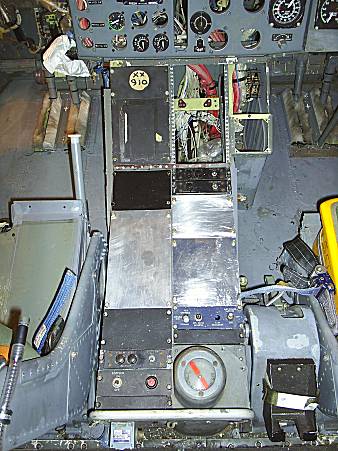 |
|
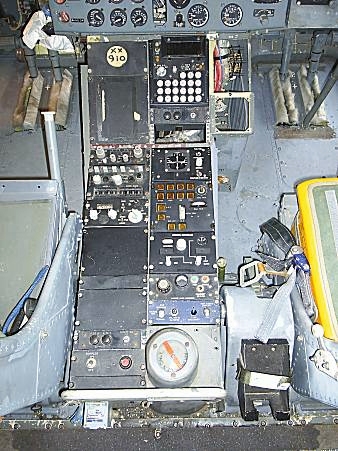 |
|
|
|
| Chris Adams took these photos of
XX910's cockpit centre floor console before (left)
and after (right)
replacement of missing switch panels at RNAS Yeovilton in March 2011. |
|
|
|
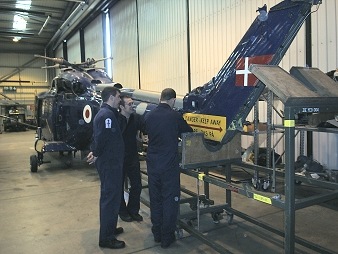 |
|
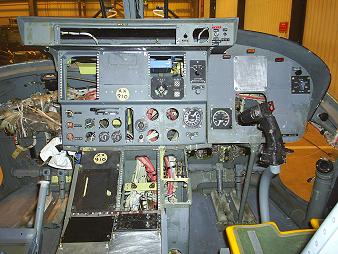 |
|
|
|
| Towards the end of March 2011 the tail
cone mounting points on the airframe (above
left) had been strengthened sufficiently to allow
the Danish tail section to be fitted temporarily. It was later
removed to allow final painting. On 21st March the cockpit instrument
panel (above
right) was still without half its complement of
instruments and awaiting more information about the 1976
configuration.
Much of this information was eventually derived from a HAS.2
photograph provided by AgustaWestland and instrument fitting
continued into mid-May. Above photographs by Chris Adams. |
| |
|
|
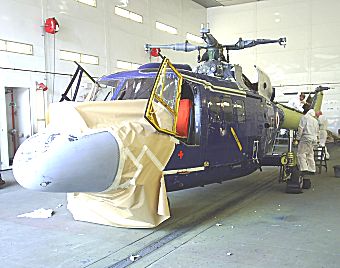 |
|
 |
|
|
|
| XX910 was taken into the paint shop at Yeovilton on 13th June 2011 and is seen (above left) with much of
the spray work complete. The nose is masked off prior to application
of the characteristic matt black while the tail boom and pylon await
their coatings of Oxford blue. On 22nd June (above right) the final
masking was removed leaving only some stencil work and fairings to
be completed before the machine was moved out next day and prepared
for exhibition at the 9th July 2011 Air Day.
Photos by Chris Adams. |
| |
|
|
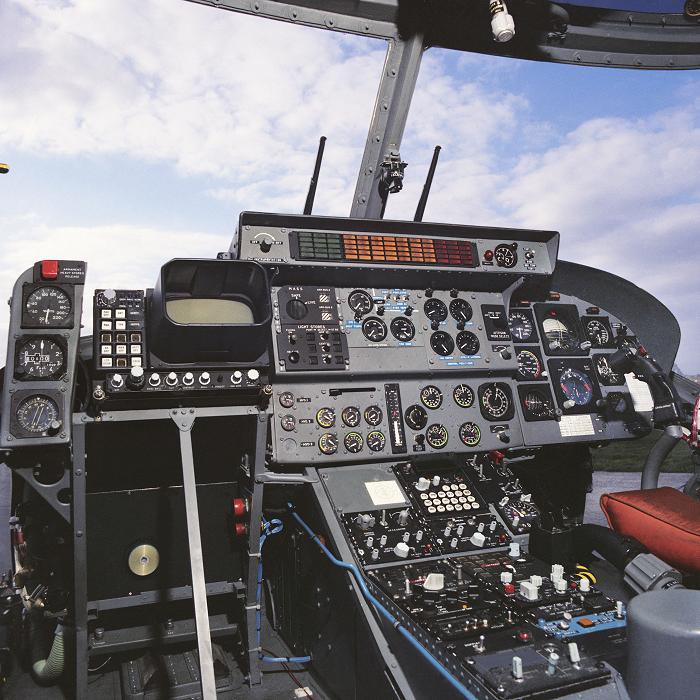 |
|
|
|
| Thanks go to AgustaWestland
for allowing use of their 1970s photo (above) of a prototype Lynx HAS.2
cockpit - probably XX910, showing most of the original panel layouts
and left hand seat radar fit. |
|
|
|
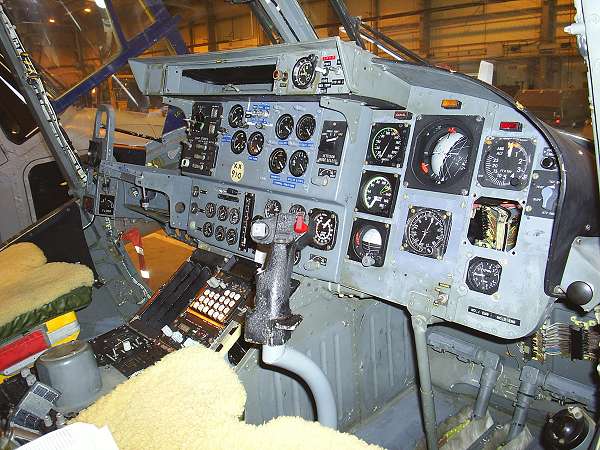 |
|
| Chris Adams' photo of XX910's cockpit
instrument panel on 12th May 2011 nearly restored to its 1970s
state, thanks to information obtained from the Westland archive
photograph. |
| |
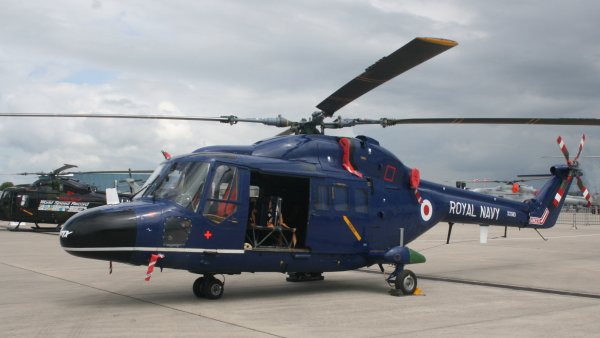 |
|
| Lynx HAS.2, XX910, with restoration
completed, on static display at Yeovilton Air Day on July 9th 2011 |
| |
| A&AEE, Boscombe Down, are believed to
have used XX910 for trials of equipment up to 1978, when
it was transferred to the Royal Aircraft Establishment, later DERA,
at Farnborough. There it was used for Seaspray radar and other
avionics trials but
eventually placed in storage and kept as a source of parts for use
on other airframes. Acquired by The Helicopter Museum in December
2000, XX910 had never entered operational service though it had
probably been involved in some of the early trials
of the Sea Skua air-to-surface
missile system at the RAE Aberporth range in Cardigan Bay.
The Royal Navy's 815 Sqn sent twenty-four
Lynx HAS.2 helicopters
(right) to the South Atlantic
in 1982, during the Falklands War. Some of these operated from the
decks of HMS Sheffield, HMS Coventry, HMS Broadsword and the Amazon Class frigates.
|
|
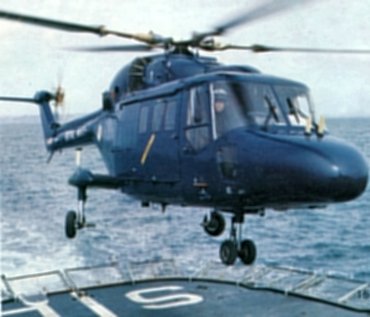
|
|
Kathryn Sherrington, The Museum's Collections Officer said, in
2011, "We
are delighted to be cooperating with RNAS Yeovilton to restore this
historic aircraft. Although we have been collecting the missing
parts over the years we haven't had the manpower needed to work on
the aircraft, so this is a win-win solution".
|
| |
Back to Restoration Index


















